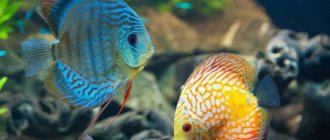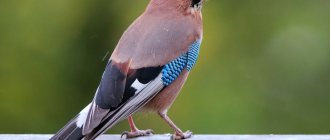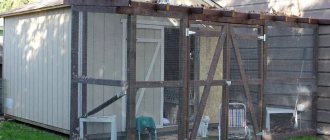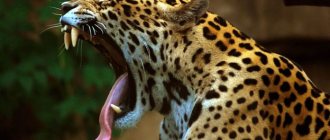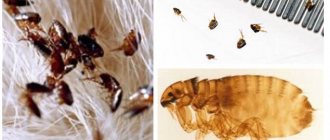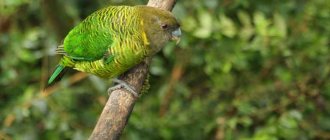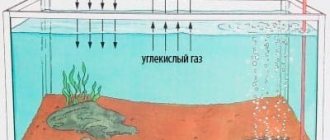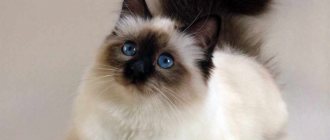Habitat in nature
Under natural conditions, these creatures live in the warm waters of shallow rivers, whose bottom is covered with fallen leaves. Tetras' home waters are located in tropical forests, their beds hidden by dense vegetation. The fish try to stay near snags attached to the bottom and live in schools.
Area
This breed of sea creatures inhabits the forests of South America. Various species of this group live in separate places in the Amazon basin. The fish came to Europe in the second half of the 20th century.
Variety of species
As for the diversity of tetra fish, there are a lot of species. They are divided more by appearance than by behavior and temperament. Next are the most popular types with photos.
African
Scientifically, Arnoldichthys spilopterus lives in the Congo. This is an unusual, rainbow fish, shimmering in many bright shades - from purple to yellow. They have an elongated body and large scales.
White
Gymnocorymbus ternetzi, artificially bred from the Black Tetra. High body, large, veil fins, transparent color. Undemanding, perfect for a beginning breeder.
Diamond
Moenkhausia pittieri, found in Venezuela. It has an oval, slightly elongated body, yellowish-gray color. A distinctive feature of the breed is its scales, which can reflect and break light into rainbow reflections, like a diamond.
Blue
Alestopetersius smykalai, native to Nigeria. Almost disappeared in nature, its export is prohibited. Color - silver with a blue tint. The body is long, slightly compressed at the sides.
Green stripe
Iguanodectes spilurus, or Tetra Iguana. Found throughout the Amazon. It is large in size - up to 10 cm. A distinctive feature is a green stripe along the body.
Golden
Hemigrammus rodwayi, live in the Amazon, at the crossroads of salt and fresh waters. Famous for their characteristic golden color. At the same time, individuals raised in captivity lose this shade, becoming silver.
Exquisite
Scientific name: Hyphessobrycon bentosi, found in slow-flowing tributaries. Pink body, black markings on fins with white tips.
Colombian
Hyphessobrycon columbianus, lives in the Acandi River on the border between Panama and Colombia. The color is double - blue on the back turns into silver towards the belly.
Royal
Nematobrycon palmeri, native to northwestern Colombia. The coloring of the royal tetra is unusual - its transparent, purple-tinged back is intersected by a black stripe, turning into a dark-colored abdomen. The most popular of the entire group of tetras.
Red
Hyphessobrycon flammeus, found in eastern Brazil. Notable for the bright fiery tint of its scales. If the fish is stressed, the color may fade.
Lemon
Hyphessobrycon pulchripinnis, native to the Peruvian Amazon. It is distinguished by its lemon color, which is also an indicator of the condition of the individual. If the scales turn pale, the fish is unhealthy.
Blue
Mimagoniates microlepis, lives in southeastern waters of Brazil. They have pale blue scales. During the mating season they are capable of emitting sound signals with their swim bladder.
Tetra
It is also called Ordinary. Scientific name: Prionobrama filigera. It has a diamond-shaped body and an adipose fin behind the dorsal. Lives up to 6 years, lives in schools. Characterized by a calm and peaceful disposition.
Ulreya
Hemigrammus ulreyi, lives in Paraguay. Gray scales, longitudinal stripe of black and yellow color throughout the body.
Schultz
Name - Hyphessobrycon haraldschultzi, family Сharacins, habitat - Araguaia River. It is distinguished by its red hue and dwarf size.
Black (Veil)
Gymnocorymbus ternetzi, derived from the Black Tetra. Its peculiarity is its long, voluminous fins, the size of the fish itself. The color of the body and tail is silver, and the dorsal and anal fins are inky black.
Sex differences
Males of this breed are larger than females and are much brighter in color. Males have a black stripe running along the side of the ventral and anal fins. The female's tail is pink.
Kinds
The variety is the envy of many other pets. The species have beautiful names - black phantom, caramel, glofish.
These inhabitants of the aquarium are represented by all colors of the palette, there are even transparent specimens - a lantern with a pronounced shiny body. Kerry is easily recognized by its amazing blue body shade, while the pink one has a delicate shade of lilac.
The varieties differ not only in the shade of the body, but also in its shape, size, and tail.
Gold
One of the most memorable shades is gold. The effect is achieved due to the content of the coloring pigment guanine, which gives a shimmer. In addition to color, guanine protects your pet from parasites. On the body of the goldfish there is a pronounced dark stripe that widens towards the tail. The golden tetra loves bright light and dense thickets.
Diamond
The diamondfish was discovered in 1920 and was one of the first to live in an aquarium. All thanks to the unique sheen of the scales, which only mature individuals can demonstrate. The shine on the body is very bright, but not everywhere, and appears in places when the fish moves.
Royal
Medium in size, usually does not grow longer than 4 cm, but it is difficult to miss. It has a chic coloring in blue and purple tones. On the back, closer to the abdomen, a pronounced dark stripe is visible.
The royal or tetra palmeri was described more than a hundred years ago. Since that time, it has been the most desirable acquisition for aquarists precisely because of its beautiful color.
Fire or Amanda's tetras
The second name is dwarf, and was studied in 1987. Amanda is small in size, her body barely reaches two centimeters. Fiery Amanda is a solid color with a pronounced red or dark orange hue. The body is translucent and looks great in a flock, just like the Von Rio tetra.
Reds
One of the most recognizable fish of the characin family is Bleur's tetra or red-nose tetra . The pet's body color is light, the tail is striped, and the fish is predominantly silver in color. It got its name from the pronounced red pigment that colors the head. Often confused with Rhodostomus.
Colombian
The Colombian is predominantly gray or white in color, with red fins.
The Ecuadorian tetra, or sapphire, flattened laterally, is quite large compared to other relatives. The length reaches 7 cm. The color of the fish is unique - the back has a bright blue iridescent tint, from the middle of the barrels to the belly
Lemon
Discovered in 1937 in the Amazon. It is yellowish in color, which is why it got its name – lemon. The beautiful lemon shade of the pet attracts aquarists.
Redspotted or rubrostigmas
The red-spotted tetra, like Rhodostomus, has a small body size, but this fish cannot be ignored in the aquarium. On her light silver body there is a bright red spot, which is why the red-nosed pet received the second name bleeding heart. Lives in the Amazon, discovered more than a hundred years ago.
Black or thorns
Ternetias were imported not so long ago - in 1993. Outwardly it looks like a neon - the same elongated body shape and stripe on the side, only its color is not blue, but silver. The color of the fish varies from black to gray. It is interesting that thornets can have vertical, horizontal stripes, and also in the form of separate spots - this type of fish makes the aquarium very impressive.
Long-finned black
Long-finned black tetras are another form of black tetra. Their difference is in the most beautiful fin, which has a fan-shaped shape and flutters beautifully when moving in the water. Its artificial origin does not make it sick; on the contrary, it lives as long as its relatives.
White
Obtained by selection from the black tetra, it does not occur in nature. It has a beautiful white-silver hue, chic translucent fins. Due to its overdeveloped fins, the white aquarium tetra appears to have a skirt.
fireflies
Erythrozonus or firefly is a gorgeous fish of the characin family. Her body has a dark bronze, almost brown color with a greenish tint, but the most important decoration is a bright red stripe running down the middle of the body from head to tail. The reflection of the stripe gave the pet the name firefly.
Copper
Copper has a beautiful color with a characteristic shade. Copper tetras are bright orange or light red depending on the presence of pigment. Usually has a dark stripe on the body, widening towards the caudal fin. The character of the copper hasemania is more militant; it even cuts off the fins of its neighbors if it does not get along with them.
Glass
Glass pets are considered one of the most spectacular. The glass tetra got its name because its body is translucent, like glass, and you can even see the pet’s spine. Pristella looks incredible in the aquarium - only its head and fins are silver in color; the caudal fin has a noticeable red spot. When moving, a unique visual effect is created.
Cardinal
The cardinal tetra or red neon is one of the most popular aquarium inhabitants. The body of the fish is light-colored on top, there is a bright blue stripe on the side in the middle, and the abdomen is painted red. The tetra is very elegant, and in a flock it will decorate any aquarium.
Congo
Congo is another representative of the brightest color of fish of this species. The back of the pet is orange. The rainbow shade is very rich, smoothly turning into blue. The rainbow tetra has shiny scales that shimmer in the light. Another advantage of the Congo rainbow tetra is its beautiful fins.
Character and behavior
Tetra is a calm and peaceful pet. They do not spoil the landscape and algae. This breed lives in flocks, so it is advisable to place at least 7 individuals in the aquarium at once. Lonely individuals become aggressive.
Compatibility with other types
Tetras coexist well with species of similar sizes and the same calm temperament:
- guppy;
- neon;
- catfish;
- discus;
- mollies.
You should not place these species in the same aquarium with them:
- gold fish;
- cichlid;
- barb;
- astronotus.
Larger and more temperamental fish will annoy timid characionids and take away food.
Table of basic parameters of maintenance, care and nutrition:
| What should be the volume of the aquarium? | 10 liters per individual |
| What should the temperature be? | from +22-27°C |
| What should the pH be? | from 6-7 pH |
| What should the water hardness be? | up to 15°dH |
| What should the substrate be? | no sharp corners |
| What kind of lighting should there be? | moderate |
| What should be the movement of water | moderate |
| Maximum fish size | up to 8 cm (depending on the type) |
| What does it eat? | dry, live and frozen food |
| Type of aquarium fish | non-aggressive |
| Who is compatible with in an aquarium? | get along with small non-aggressive fish species |
Conditions of detention
Caring for characins is not so difficult if you know a few simple rules and take into account important points.
Choosing an aquarium
When purchasing, you should pay attention to the following points:
- volume - average, from 60 to 100 liters;
- the shape is preferably rectangular;
- soil - dark gravel or sand, with the addition of dry leaves;
- There should be a lot of vegetation: moss, duckweed, fern, elodea.
Characins prefer dim lighting; their color fades from direct rays. The glass tetra requires particularly thick shade to show off its uniqueness.
Water parameters
Now a few words about water:
- characins need clean, settled water without chlorine;
- temperature - about 22-26°C;
- acidity - not higher than 7;
- hardness - no higher than 15;
- The water is changed once a week in a volume of 1/6.
It will be useful to saturate your pets' habitat with tannins.
Necessary equipment
To create suitable conditions you will need special equipment.
These devices are worth purchasing:
- thermostat and thermometer - to prevent temperature changes;
- water filter, preferably peat;
- an aerator that saturates the water with oxygen.
It’s a good idea to set up a small darkened corner for the fish. The entire characidae family tends to hide in its natural habitat.
Scenery
Tetras are undemanding when it comes to decoration. The best design for an aquarium will be floating plants. At the same time, you should not place shells and stones in the aquarium - they can change the balance of minerals, which will lead to stress in its inhabitants. The tank should be installed in a quiet corner, since characins do not tolerate noise or excessive activity around them.
Maintenance and care
In their natural environment, tetras live in large aggregations with other members of the characin family. At home in flocks of 8–10 individuals. For such an amount you will need a container of 60 liters. Active fish will happily swim through the water space. A healthy state depends on the intensity of the color. Fading occurs until the color disappears completely.
Water
The fish feel comfortable in slightly acidic, soft water, saturated with tannins. The temperature in the aquarium is 22–25 degrees. Change 15% of the fluid weekly. To maintain the desired temperature, purchase a thermometer and thermostat. A filter and aerator are required.
Lighting
Lighting affects color saturation. The light should be diffused. In dim light, the scales and fins remain bright.
Priming
Fish need dark, medium-sized soil. Use sand or fine gravel.
Scenery
You cannot use stones and shells, as water parameters change. The presence of oak snags and shelters is welcome.
Plants
Tetra fish do not eat aquarium greens. Plants include both unpretentious and expensive, demanding options:
- Riccia floating;
- Java moss;
- hornwort;
- Cladophora globulus;
- salvinia;
- Vallisneria;
- ferns.
- bloodworm;
- Artemia;
- dry food;
- daphnia;
- chopped broccoli and spinach;
- cereals;
- egg yolk powder.
Before planting, the plants are kept for 5–10 minutes in an alum solution (1 teaspoon per liter of water). This measure will prevent the risk of introducing parasites into the aquarium.
Feeding
Fish are omnivores. Suitable food distributed over the surface of the water:
Make your diet varied and balanced.
Feeding and diet
Tetras are not too demanding when it comes to nutrition. They readily eat live food - cyclops, bloodworms, daphnia, brine shrimp, tubifex, and do not refuse dry granulated food. The fish's diet should be varied, rich in additives - vegetable, egg yolks, as well as finely crushed oatmeal. Feeding occurs twice a day - morning and evening.
Feeding the fry
In the first days of feeding, the fry are given a slipper ciliate and hard-boiled egg yolk. Two-week-old young animals are transferred to live food - cyclops, rotifers, echintraeus, artemia nauplii, while continuing to produce yolk. At first, feeding is done every 3-4 hours, then the interval is increased to 6-7 times a day.
Feeding rules
Tetras are omnivorous inhabitants of water bodies, but to maintain the brightness of their color they need a varied and fairly nutritious diet. A significant proportion of the diet will be live food - daphnia, bloodworms, and brine shrimp. Fish eat egg yolk well, and they can also be used to feed young fish after hatching from eggs. In general, tetras have an excellent appetite, and they will not refuse any treat.
When choosing food, it is important to give preference to products that remain on the surface for a long time and slowly sink to the bottom. This is due to the peculiarities of their upward-turned mouthparts.
A good solution would be to purchase a special feeder . Dry food in tablets and oatmeal are suitable. Fish readily eat greens - spinach and broccoli, but they must first be chopped, like other large foods. For variety, you can offer the fish finely ground bread crumbs, but often you should not give them grain-based food because of the possible risk of developing obesity.
Major diseases
Under favorable conditions, tetras rarely get sick. They are mainly susceptible to typical diseases of tropical breeds.
Diseases associated with unfavorable environment:
- alkalosis and acidosis, pH shock - occur due to inappropriate pH values;
- osmotic stress and shock - from changes in the mineral composition of water;
- poisoning - may occur due to harmful substances entering the tank;
- new aquarium syndrome - if the balance of minerals in the aquarium is not stable.
All these diseases have similar symptoms - anxiety, changes in color and behavior, difficulty breathing, loss of appetite. There is only one treatment - to normalize the balance of minerals in the aquarium as quickly as possible.
Characins are also susceptible to infectious diseases:
- dropsy;
- bulging eyes;
- fin rot - treated with medicine based on phenoxyethanol;
- mouth rot (fungus) - treatment is the same;
- tuberculosis;
- ulcers - they are treated with the same phenoxyethanol.
If symptoms of the disease appear - loss of appetite, strange behavior, marks and formations on the body - you should immediately isolate the sick individual and consult a specialist.
Content
Although Tetras live for many generations in the artificial environment of aquariums, they require conditions that resemble their natural habitat. First of all, this relates to the hydrochemical composition of water. Successful long-term maintenance is only possible in slightly acidic water with a low level of carbonate hardness (dGH) containing a certain amount of dissolved tannins, in particular tannins. It is worth remembering that such an important parameter as lighting is noted - in bright light the color of the fish fades, but in dim light, on the contrary, it appears in all its glory. As for the design, the choice of decor is not so critical; fish can live quite comfortably even in a half-empty tank.
Reproduction
Characins reach sexual maturity at the age of 6 months. In aquarium conditions, young animals can appear in large schools every month. This breed has high fertility, but cannot boast of a developed parental instinct.
Creating suitable conditions
Strong and healthy individuals selected for spawning are placed in a special tank, while males and females are separated. The fish are fed live food for about 10 days.
The parameters of the spawning aquarium are observed as follows: temperature 26-27 ° C, hardness not higher than 4, acidity - 6.7. The bottom is covered with a nylon mesh (permeable to eggs), or Java moss, and a washcloth and plants with small leaves are placed there.
Spawning and raising fry
The signal for the start of spawning is a decrease in acidity and an increase in temperature and pressure in the tank. To do this, water is mixed with distilled water and enriched with peat extract. Females and males are released, and, after a couple of days, mating games begin. A female tetra lays up to 300 eggs during one spawning. After the spawning is over, the fish are removed from the tank, as they may eat their own eggs. The water in the spawning tank is changed almost completely. After a few hours, unfertilized eggs acquire a whitish-cloudy hue and should be removed immediately.
The young hatch on average after five days. The fry do not tolerate bright light, so the walls of the tank should be darkened. The temperature is maintained at 24-26 degrees. Aeration is not recommended. The juveniles are fed live dust and plankton. The spawning tank should be kept perfectly clean to prevent rot and infection.
How to increase the survival rate of fry
The fry are quite independent, but they need good conditions. It is useful to add trypaflavin to water. High-quality, rapid growth and survival are facilitated by dim, diffused lighting directed from above. Do not forget about oxygenation and frequent filtration, removing uneaten food and dead larvae. Over the course of two weeks, the fry gradually become accustomed to the parameters of the environment that are comfortable for adults.
Growing conditions
The conditions for growing and keeping tetras are quite simple. They do not require complex care, but the aquarium must have at least 30 liters of free volume for a flock of 10 fish. You will definitely need algae and other aquatic plants, driftwood, behind which shy pets can hide if necessary. The optimal environment for tetras will be:
- temperature +22-25 degrees Celsius;
- hardness not higher than 15;
- pH 6-7.
Water changes are carried out in the amount of 1/6 of the total amount, performed weekly. It is imperative to exclude hazardous impurities and chlorine-containing additives. The minimum permissible temperature in the aquarium is +18 degrees, but it is better to maintain constant, higher values using a thermostat installed in the tank. In addition, you will have to install a filtration system, an aerator, and a compressor to saturate the water with oxygen.
The lighting for the tetra is recommended to be diffused, not very bright.
When arranging a place of residence for fish, it is important to ensure the creation of secluded corners with algae. There the fish will hide from predators or aggressive neighbors or excessively bright light. Suitable plants include Java moss, elodea, duckweed, and ferns. Fish do not show food interest in green spaces; you can plant rare and expensive species without fear that they will be spoiled. But it is better to place them on the rear and side walls of the tank.
It is better to use gravel or river sand as soil. Tetras stay on the surface and are almost not interested in the bottom area. When keeping fish, it is very important to leave room for them to swim in the aquarium.
At the bottom you can place decorations - driftwood from ash and oak, large stones of original shape, artificial grottoes.
Results
Thus, final conclusions can be drawn about this breed of the characin family. The tetra is a small, brightly colored fish that comes in many unique varieties. She has a peaceful character, lives in flocks, is unpretentious in maintenance and is quite easy to breed. The tetra will make a wonderful pet and will give its owner many pleasant moments of contemplation, filled with peace and tranquility.

